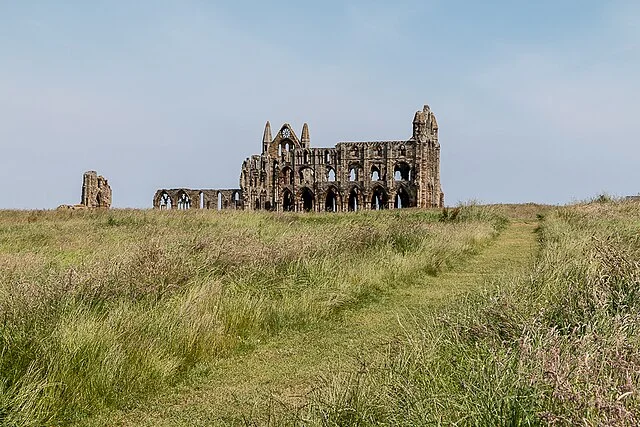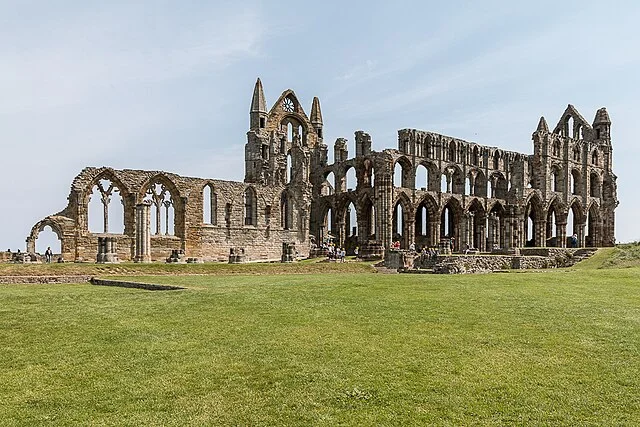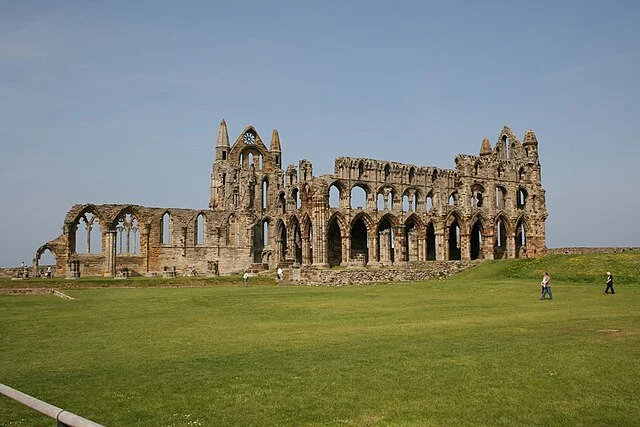Whitby Abbey is a historic site located in North Yorkshire, England, overlooking the North Sea. It stands as a symbol of England’s early Christian history, with origins dating back to the 7th century AD. The abbey has undergone numerous transformations and has played an essential role in religious, cultural, and political life.
Get your dose of History via Email
Founding of Whitby Abbey

Whitby Abbey was founded by Hilda of Whitby, a noblewoman who became an abbess. She established the monastery around AD 657. The abbey quickly became one of the most influential centers of Christianity in early Anglo-Saxon England.
Hilda’s leadership attracted many prominent figures, including the future Archbishop of Canterbury, Theodore of Tarsus. Under her guidance, Whitby Abbey became a key site for the spread of Christianity.
The Synod of Whitby

In AD 664, Whitby Abbey hosted the Synod of Whitby. This event was crucial for the Christian church in England. The synod aimed to settle the dispute between the Roman and Celtic Christian traditions, particularly concerning the date of Easter.
King Oswiu of Northumbria presided over the synod. After much debate, the Roman method of calculating Easter was adopted. The decision marked a significant moment in the unification of the English church under Roman practices.
Viking Destruction and Rebuilding

By the 9th century AD, Whitby Abbey had gained a reputation for its wealth and importance. However, in AD 867, Viking raids severely damaged the abbey. The Vikings, who had previously attacked other parts of England, pillaged the site, leaving it in ruins.
Following the Viking invasions, Whitby Abbey was rebuilt in the 11th century. It regained much of its former status but faced further challenges during the Norman Conquest of England in AD 1066. Despite these struggles, the abbey continued to serve as an important religious center.
The Dissolution of the Monasteries

The abbey’s history took another significant turn during the reign of Henry VIII. In AD 1536, as part of the English Reformation, Henry VIII ordered the dissolution of monasteries across England. Whitby Abbey was dissolved and its buildings were stripped of valuable materials.
The dissolution led to the abandonment of the abbey, which gradually fell into ruin. Many of its stones were repurposed for other local constructions.
Modern-Day Whitby Abbey

Today, Whitby Abbey is a popular historical site. It stands in ruins, yet it still conveys the power and influence it once held. The abbey attracts many visitors who come to explore its history and enjoy its dramatic location.
The site is also notable for its association with Bram Stoker’s novel Dracula. Whitby features prominently in the story, with the abbey and its cliffs forming a gothic backdrop to key events in the novel.
Archaeological Excavations

Archaeological work at Whitby Abbey has uncovered valuable insights into its past. Excavations have revealed parts of the early Christian church, including a high-status Anglo-Saxon burial. The findings highlight the significance of Whitby Abbey in the development of early medieval Christianity in England.
Conclusion
Whitby Abbey holds a prominent place in England’s history. From its foundation by Hilda of Whitby to its destruction and eventual ruin, the abbey has witnessed many pivotal events. Today, it stands as a testament to the rich religious and cultural heritage of early medieval England.
Source:

